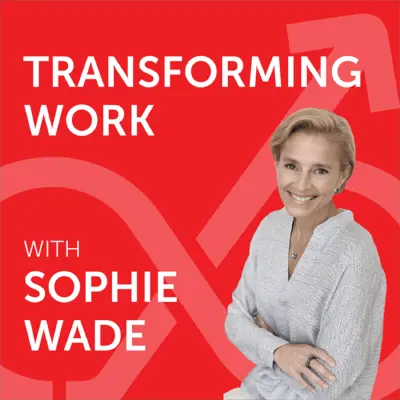Vidya Krishnan, Chief Learning Officer at Ericsson, combines her engineering experience, systems thinking, and love of learning to connect core upskilling with corporate strategy. For Vidya, learning at the speed of technology development requires a learning mindset and future-focused dynamic approach to jobs and skills. Vidya explains how a project marketplace enables internal talent mobility: redesigning work with a skills-focus; facilitating evolution to ‘resource fluidity’; and allowing organic shifts into emerging areas as employees gravitate towards where work is flowing. Vidya recommends stability management with change management.
TAKEAWAYS
[02:06] Vidya studies electrical engineering influenced by her family’s engineering legacy.
[03:16] Deeply admiring engineering and loving learning, Vidya admits she had ‘will before skill’.
[04:14] Vidya promotes internships: good summertime feedback boosts her while some college studies challenge.
[05:07] For personal reasons Vidya leaves AT&T joining Nortel (acquired by Ericsson) in Dallas.
[06:19] Always an engineer, now focused on people’s experiences in L&D, Vidya loves teaching.
[08:24] Learning is as the heart of every transformation for Vidya’s team and workplace.
[09:19] Learning even more from failure, by addressing both shame and ignorance after mistakes.
[11:11] Technology and people are inherently upgradable—ongoing learning at a tech company.
[12:34] How engineers need "power skills" like storytelling and managing stakeholders.
[14:05] Looking creatively to other industries, like aviation, to solve engineering challenges.
[16:49] Vidya has a double life for three years learning and networking at learning conferences.
[18:54] Managers want her to advance in engineering, but Vidya is determined to change field.
[19:45] Vidya overcomes self-doubt and family concerns while transitioning her career.
[21:15] After three years, Vidya transitions horizontally into technical training for customers.
[22:56] Becoming a studio offering digital learning using multimedia and experiential techniques.
[23:41] How to create capabilities that customers will pay for and employees value.
[27:00] Systems thinking to describe work’s three dimensions: digital ecosystem, business system, and culture system.
[30:14] A systems vs programmatic approach to work is strategic and natural at a tech company.
[31:20] Skills development is vital and therefore must be connected to company strategy.
[33:21] Constructing a framework where skills are derivative of corporate strategy.
[34:20] Starting with the one skill that is most consequential to the strategy—less is more.
[36:20] Two sets of skills—global critical skills (top down) and job role skills (bottom up).
[37:30] Digitalizing a job architecture starts development of a skills taxonomy.
[38:23] Getting on the skills games board through credentialing and contribution.
[39:13] To be future focused, skills and job roles are digitalized into a relational database.
[40:40] Skills’ journey phases: initialize, mobilize, and capitalize advancing with winnable games.
[43:10] "Resource fluidity" is where employees’ skills are not confined to their job role—reskill and constantly redeploy.
[44:45] A talent marketplace that is a project marketplace redesigns work to put skills to work.
[47:43] Disaggregating work into projects enables work packages doable outside of people’s day jobs—a third space—to develop new skills.
[50:30] Enabling employees to gravitate towards emerging areas from eroding areas.
[51:35] The hypothesis that progressive career reinvention at scale will pay for itself.
[52:25] A project marketplace creates capability and expands capacity.
[54:50] Partnership is the new leadership, and co-creation and co-ownership are key to execution.
[56:10] Stability management needs to accompany change management.
[57:16] How business cross-functionality can allow varied thinking and ‘wicked’ problem solving.
[58:13] Project marketplace decouples work from many traditional boundaries.
[01:00:21] IMMEDIATE ACTION TIP: Start now. Start small with one critical skill. Connect it to strategy, which is done systematically.
RESOURCES
Books mentioned:
The Problem with Change by Ashley Goodall
Reinventing Organizations by Frederic Lalou
QUOTES (edited)
“If we give people the opportunity to put their skills to work, this is actually very healthy for the company because we are organically self-shaping away from eroding areas into emerging areas …people naturally gravitating to where the work is flowing.”
“You have a dynamic platform that's digitalized for jobs and skills to stay in lockstep with industry evolution: what's emerging, what's eroding, and for that stuff to easily automatically flow through every other system in the company where people are making decisions about who to hire, how to evolve their career, how to specify the requirements for this requisition, what job roles need to go out the window, what new job roles need to be introduced.”
“How do you put learning in the flow of work and work in the flow of learning so that it's happening to people experientially?”
“Work has three dimensions: there's an ecosystem, a business system and a culture system.”
“The logic was that if things that are vital should be systematic rather than programmatic so that they happen no matter what, because that's what vital things should do. And then you fundamentally believe that skills are vital, as I do, because they are what connect strategy to execution. So if you believe that, then it follows you must take a systematic approach.”
“Strategy without skills is a daydream. Skills and execution without strategy is a nightmare.”
“Capabilities are what create execution of the strategy.” “It's a means to an end. What's the end? It's to execute strategy. Therefore, it has to be systematically connected to strategy.”
“Partnership is a new leadership and co creation and co ownership is actually the key to execution, which is not clean and it may be a little bit messy.”
